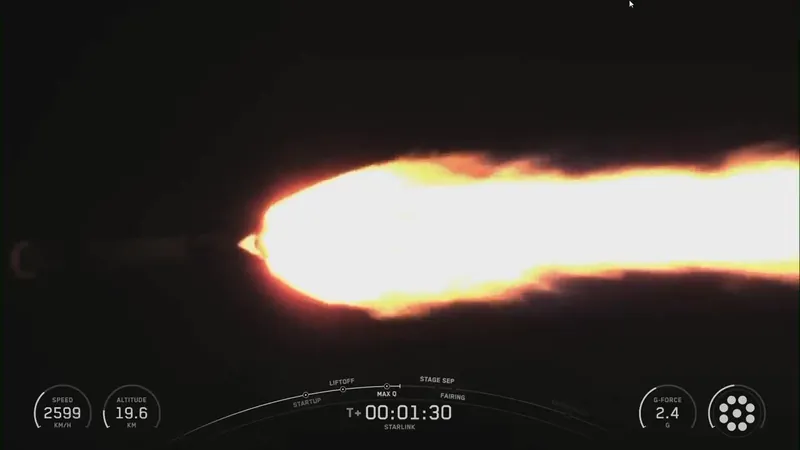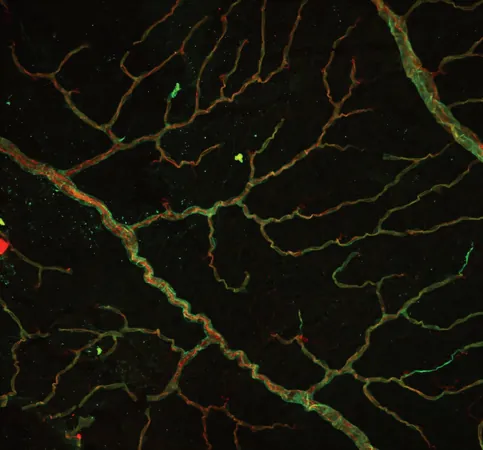
Revolutionary X-ray Flashes Illuminate the Secrets of Quantum Dots
2025-08-18
Author: Noah
In an astonishing breakthrough, scientists have harnessed powerful X-ray flashes to unveil the intricate dance of electron-hole pairs within quantum dots. These tiny powerhouses may hold the key to revolutionizing solar panels and LED technology!
When light strikes solar cells, it generates electron-hole pairs—excited electrons that can roam freely, creating ‘positive gaps’ or holes in the semiconductor. This process produces electrical charge, but what's truly fascinating is how these charged particles deform the surrounding atomic lattice.
First-Time Direct Observation Unveiled
An international team at the European XFEL has made history by directly visualizing this subtle effect for the first time. Johan Bielecki, a leading scientist on the project, stated, "Using our ultra-fast X-ray laser, we captured this barely noticeable change, which could transform our understanding of materials for solar cells and LEDs." This research, published in ACS Nano, marks a significant milestone in material science.
Quantum Dots: Tiny Giants with Big Impacts
The study centered on a quantum dot comprised of cesium, lead, and bromine (CsPbBr3), measuring just a few millionths of a millimeter. Quantum dots are unique; their properties can only be explained through quantum physics, challenging our classical understanding of materials.
When illuminated, these dots produce electron-hole pairs that tug at the atoms in their crystal structure. Imagine two people pulling on a net—this is how electron-hole pairs create 'dents' in the crystal structure, forming what's known in physics as an exciton-polaron.
Impact on Future Technologies
Even though this lattice deformation may affect only a handful of atoms, its influence on the material's optical and electronic properties is monumental. Zhou Shen from the Max Planck Institute noted, "Understanding these deformations is crucial. It will help us design superior materials for more efficient displays and cutting-edge sensors."
The Power of High-Speed Imaging
Employing the world’s largest X-ray laser located in Schenefeld, near Hamburg, the researchers executed this groundbreaking experiment. This laser emits incredibly brief and intense X-ray pulses, enabling the capture of images in femtoseconds—one quadrillionth of a second. Bielecki likens it to using a high-speed camera to observe atomic movements, providing unparalleled insight into the microcosm of light and matter.
A Leap Towards Advanced Optoelectronic Components
The ability to directly observe these interactions at such a minuscule scale is a game changer. It deepens our understanding of light-matter interactions, paving the way for innovative technologies—ranging from hypersensitive light detectors to cutting-edge quantum computing components.
Shen confidently remarked, "This research represents a crucial step toward the precise control of these effects. It opens the door to creating powerful, energy-efficient optoelectronic components in the future. Get ready; the future of technology is dazzlingly bright!"









 Brasil (PT)
Brasil (PT)
 Canada (EN)
Canada (EN)
 Chile (ES)
Chile (ES)
 Česko (CS)
Česko (CS)
 대한민국 (KO)
대한민국 (KO)
 España (ES)
España (ES)
 France (FR)
France (FR)
 Hong Kong (EN)
Hong Kong (EN)
 Italia (IT)
Italia (IT)
 日本 (JA)
日本 (JA)
 Magyarország (HU)
Magyarország (HU)
 Norge (NO)
Norge (NO)
 Polska (PL)
Polska (PL)
 Schweiz (DE)
Schweiz (DE)
 Singapore (EN)
Singapore (EN)
 Sverige (SV)
Sverige (SV)
 Suomi (FI)
Suomi (FI)
 Türkiye (TR)
Türkiye (TR)
 الإمارات العربية المتحدة (AR)
الإمارات العربية المتحدة (AR)